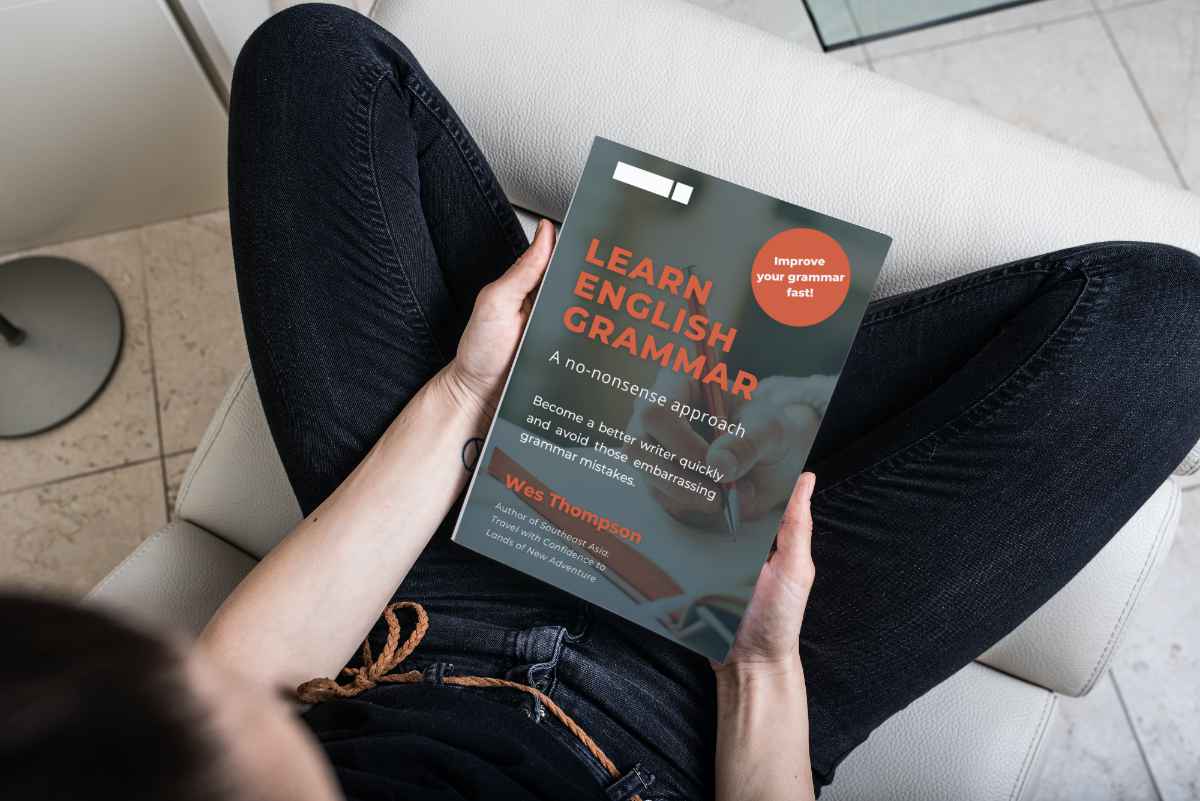Avoiding common grammar mistakes is essential for clear communication. Whether you’re writing an email, an academic paper, or a blog post, proper grammar ensures your message is understood and taken seriously.
However, even the best writers sometimes slip up. Here are 11 common grammar mistakes and how you can avoid them.
1. Subject-Verb Agreement
Mistake: The subject and verb in a sentence must agree in number. If the subject is singular, the verb should be singular, and if the subject is plural, the verb should be plural.
Example:
Incorrect: The list of items are on the desk.
Correct: The list of items is on the desk.
Explanation: This is one of the most common grammar mistakes. Here, “list” is the subject, not “items.” How can you tell? Look for what is called a “prespositional phrase,” with words like “of,” “from,” “to,” “at,” etc.
The subject is never within a prepositional phrase, in this case “of items.” So, “items” cannot be the subject here.
Rather, the subject is “list,” and it is singular, so it should be followed by the verb “is” not “are.”
How to Avoid:
Identify the subject and verb in the sentence.
Ensure the subject and verb match in number (singular or plural).
2. Incorrect Verb Tense

We all make grammar mistakes from time to time, but learning how to avoid them can improve your writing.
Mistake: Verb tenses indicate the time of action. Switching tenses within a sentence or a paragraph can confuse the reader.
Example:
Incorrect: She writes [present tense] the report and then she filed [past tense] it.
Correct: She writes the report and then she files it. [both present tense]
Correct: She wrote the report and then she filed it. [both past tense]
Explanation: Mixing past and present tense can be confusing. Ensure consistency unless there is a clear reason for the change.
How to Avoid:
Decide the time frame, past or present, that you are writing about and stick to that tense.
Proofread your work to check for inconsistent verb tenses.
3. Misplaced Modifiers
Mistake: Modifiers are words or phrases that describe another word or phrase. A misplaced modifier is placed too far from the word it’s supposed to modify, causing confusion.
Example:
Incorrect: She almost drove her kids to school every day.
Correct: She drove her kids to school almost every day.
Explanation: The first sentence suggests she almost, but didn’t actually, drive her kids to school. The correct sentence clarifies she drove them to school nearly every day.
How to Avoid:
Place modifiers as close as possible to the word they are modifying.
Reread sentences to ensure the modifier clearly describes the intended word.
4. Using “Less” Instead of “Fewer”

You can work together as a team to help avoid common errors in writing.
Mistake: “Less” is used for uncountable nouns, while “fewer” is used for countable nouns.
Countable nouns are individual items, such as people, books, cars, houses, bottles, and miles.
Uncountable nouns cannot be seen as individual items, but rather a mass, such as water, urgency, happiness, air, and room.
Example:
Incorrect: There are less apples [countable noun] in the basket.
Correct: There are fewer apples in the basket.
Correct: There is less water [uncountable noun] in the river today than there was last week.
Explanation: “Apples” can be counted, so “fewer” is the correct term. “Water” can be measured, but not counted, so it is an uncountable noun. So, we must use “less” when referring to water.
How to Avoid:
Determine if the noun is countable or uncountable.
Use “fewer” for countable nouns and “less” for uncountable nouns.
5. Confusing “Its” and “It’s”
This is another of the most common grammar mistakes made in English writing.
Mistake: “Its” is a possessive pronoun, while “it’s” is a contraction for “it is” or “it has.”
Example:
Incorrect: Its going to rain today.
Correct: It’s going to rain today.
Incorrect: The cat chased it’s tail.
Correct: The cat chased its tail.
Explanation: “It’s” should only be used when you can substitute “it is” or “it has.” “Its” indicates possession.
How to Avoid:
Double-check if “it’s” can be expanded to “it is” or “it has” in the sentence. If not, use “its.”
6. Dangling Modifiers
Mistake: A dangling modifier is a word or phrase that modifies a word not clearly stated in the sentence, leading to confusion.
Example:
Incorrect: Running to catch the bus, the rain started pouring.
Correct: Running to catch the bus, she felt the rain start pouring.
Explanation: The first sentence incorrectly suggests that the rain is running to catch the bus. The correct sentence clarifies who is running.
How to Avoid:
Ensure the modifier clearly refers to the subject performing the action.
Rewrite the sentence if necessary to avoid confusion.
7. Confusing “Then” and “Than”
Mistake: “Then” is used for time or sequence, while “than” is used for comparisons. Even experienced writers make this mistake.
Example:
Incorrect: She is taller then her brother.
Correct: She is taller than her brother.
Incorrect: We went to the store, than we went home.
Correct: We went to the store, then we went home.
Explanation: “Than” should be used for comparisons, and “then” for sequence or time.
By the way, a comma is required before “then” in this sentence. It is incorrect to omit the sentence.
How to Avoid:
Use “than” when comparing two things.
Use “then” when referring to time or the next step in a sequence.
8. Incorrect Use of Commas in Compound Sentences
Mistake: A comma should be used before a conjunction (and, but, for, or, nor, so, yet) that joins two independent clauses. An independent clause is a part of a compound sentence that could be a sentence on its own.
A compound sentence is one that is composed of two independent clauses joined by a conjunction. Whew! That’s a lot of definitions, so now let’s clarify it all with some examples.
Example:
Incorrect: I wanted to go to the movie but I had to work.
Correct: I wanted to go to the movie, but I had to work.
Explanation: Can you see how “I wanted to go to the movie” and “I had to work” can each be a complete sentence on its own? Without the comma, the compound sentence can be difficult to read. The comma before “but” separates two independent clauses.
How to Avoid:
Identify the independent clauses in the sentence, that is the parts that could be a sentence on its own.
Place a comma before the conjunction that joins them.
9. Using “Who” vs. “Whom”
Mistake: “Who” is used as a subject, while “whom” is used as an object. This is another very common grammar mistake.
Example:
Incorrect: Whom is going to the store?
Correct: Who is going to the store?
Incorrect: She is the person who I was talking to.
Correct: She is the person whom I was talking to.
Explanation: “Who” functions as the subject of a verb, whereas “whom” functions as the object of a verb or preposition. One easy way to determine when to use “whom” is if there is a preposition, such as “to,” “for,” or “from,” for example, in the sentence.
It’s “to whom am I speaking,” not “to who am I speaking” or “who am I speaking to.”
How to Avoid:
Determine if the word functions as a subject or an object in the sentence.
Use “who” for subjects and “whom” for objects.
10. Apostrophe Misuse with Plurals and Possessives

With more and more practice, you will become a better writer and avoid common grammar mistakes.
Mistake: Apostrophes are used to show possession, not to make words plural.
Example:
Incorrect: The Smith’s are coming over for dinner.
Correct: The Smiths are coming over for dinner.
Incorrect: The books cover is torn.
Correct: The book’s cover is torn.
Explanation: Apostrophes should not be used to form plurals. They indicate possession.
How to Avoid:
Use apostrophes to show possession (the cat’s [singular] toy, the dogs’ [plural: many dogs] park).
Do not use apostrophes to make words plural.
11. Incorrect Pronoun-Antecedent Agreement
Mistake: A pronoun must agree in number and gender with its antecedent.
Example:
Incorrect: Each student [singular] must submit their [plural] assignment by Friday.
Correct: Each student must submit his or her assignment by Friday. [Both are singular.]
Correct: All students must submit their assignments by Friday. [Both are plural.]
Explanation: The pronoun “their” is plural, while “each student” is singular. They must match.
How to Avoid:
Identify the antecedent of the pronoun.
Ensure the pronoun agrees in number and gender with the antecedent.
Conclusion
Common grammar mistakes can easily slip into our writing. Being aware of these common errors and knowing how to correct them can significantly improve your communication skills. Practice makes perfect, so keep these tips in mind and revisit them whenever you write.
Whether you’re drafting an email, a report, or a blog post, clear and correct grammar will ensure your message is understood and respected.
Wes is a certified English teacher and school administrator. He has taught English literature, reading, and writing to students from grade 8 to older adult since 1998. He has taught both native speakers of English as well as English-language learners.
Please send Wes a message here and he will reply within 12 hours.
You can learn more about Wes here.



